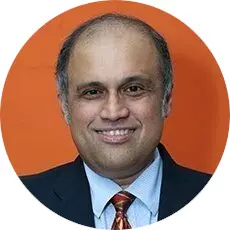
According to World Bank, there are more than 1.7 billion unbanked adults worldwide. An inventive strategy for promoting financial inclusion might be mobile money services. Millions of individuals in low- and middle-income nations are switching from an informal cash economy to an inclusive digital economy thanks to the rising mobile money business, which has become a mainstream financial service. According to a statistics report from the GSM Association, the value of transactions in the expanding mobile money services business reached $1 trillion in 2021, or $2 million in transactions each minute. In developing nations like those in Latin America, Asia, and Africa, mobile money services are very common.
What is Mobile Money?
Mobile money is defined as a type of financial transaction that makes use of technology to enable sending and receiving money via a mobile phone. The value is virtually saved (as e-money) in a SIM card-connected account of a mobile wallet. These transactions work on simple phones and don’t need an internet connection.
How does Mobile Money work?
Most frequently, banks do not manage mobile money services. Instead, they are run by mobile phone networks or what are known as mobile money operators—licensed independent payment service providers. Through the data message channel, the majority of mobile money services enable users to conduct financial activities such as peer-to-peer (P2P) transfers, bill payments, in-person purchases, online shopping, topping up cell airtime, remittances, and savings across mobile money accounts. Microcredit is also accessible through mobile money in a few nations. According to studies cited by the GSM Association, as mobile money becomes popularity, new and improved services like credit and insurance could become widely available. At authorized agents, you can also make a cash withdrawal. Local financial laws safeguard the mobile money funds kept in a mobile money account. Government oversight and licensing of mobile money ensures the security and protection of your funds. It is necessary for mobile money providers and partners to verify the user’s identity, making it far more difficult for fraudsters and other bad actors to use these services illegally. Because mobile money providers keep track of each transaction and account balance, the user’s money is safe even if their phone or SIM card is lost or stolen. The mobile phone network also encrypts every transaction.
Mobile Money for the Unbanked
Since all you need is a basic mobile phone, mobile money gives people who don’t have access to traditional banking services access to financial services. Since there are no account opening or ongoing account maintenance fees, ATM fees, or overdraft fees with mobile money systems, they are typically less expensive than bank accounts. Owning and maintaining a bank account costs money. Mobile money is popular because it is more affordable than other cash substitutes. M-PESA (a mobile application) was typically one-third to one-half more expensive in Kenya than competing services. Lower expenses directly translate into money the needy may keep; in Kenya, money was sent more frequently using M-PESA than it was through more conventional channels. Additionally, wherever there is wireless phone coverage, mobile money systems can be made available, bridging the gap created by distance and the dearth of branch offices in remote areas.
The mobile money business, which is now present in 100 countries, has grown significantly, according to data from the GSM association, as a result of its better capacity to financially involve low-income populations. The number of registered accounts has increased, rising 18% annually to 1.35 billion in 2021. The percentage of 30-day active accounts by area in Sub-Saharan Africa (53%) shows that there are now 346 million total 30-day active accounts. South Asia (20%), Latin America (6%), East Asia and the Pacific (19%), Europe and central Asia (1%), North Africa and the Middle East (1%), and South Asia (1%). It is really encouraging to see that 90-day active accounts have increased by 18% to 518 million in 2021 and are now keeping up with new account registrations. According to the IMF, mobile money has established itself as a practical substitute for traditional financial services in unstable nations where achieving financial inclusion is difficult. Mobile money services are available in more than half of the 42 fragile states. In these states, there are typically around 47 mobile money agents offering access to financial services for every commercial bank branch.
The world’s poor may participate in financial markets and manage and spend their own money because to the scale and effect of mobile money systems. Access to credit and savings options made possible by mobile money leads to greater financial inclusion, economic empowerment, and economic prosperity. People in underdeveloped countries now trust it because of its low cost, easy access to mobile devices with simple usage, safe and secure transaction feature, and government rules and support. This has paved the road for an inclusive digital economy. Governments, donors, the business community, and other stakeholders must continue to use technology, laws, and rules to increase the inclusivity of mobile money systems by enhancing and advancing efforts to close the gender pay gap and cater to the needs of both businesses and a diverse customer base.



